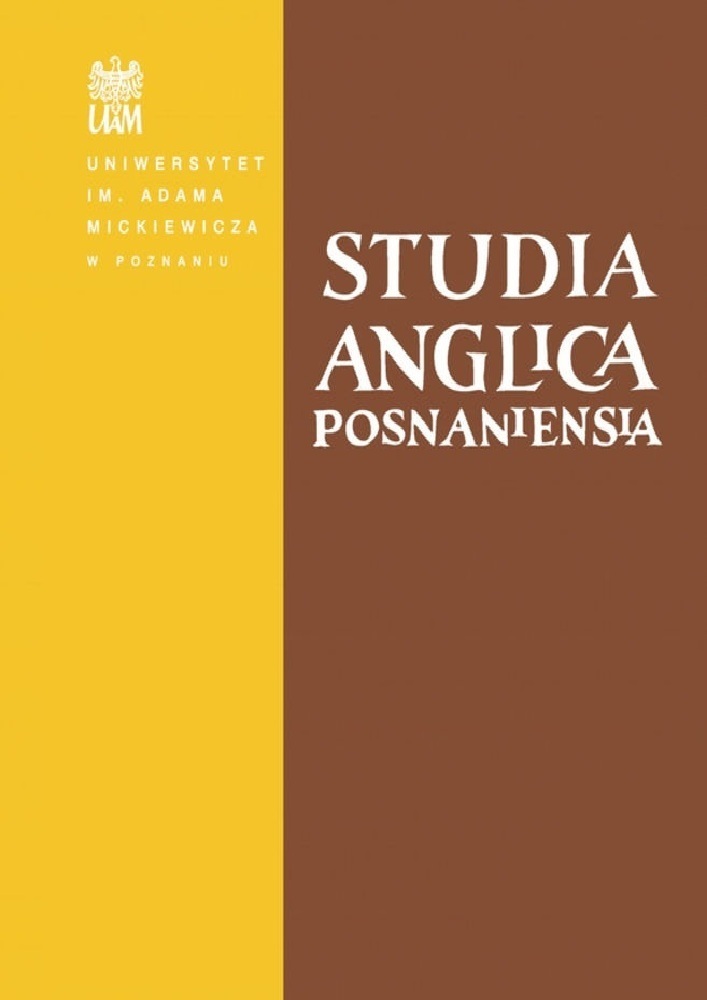Abstract
Since “we live in a culture of confession” (Gilmore 2001: 2; Rak 2005: 2) a rapidly growing popularity of various forms of life writing seems understandable. The question of memory is usually an important part of the majority of autobiographical texts. Taking into account both the popularity of life writing genres and their recent proliferation, it is interesting to see how the question “what would we be without memory?” (Sebald 1998 [1995]: 255) resonates within more experimental auto/biographical texts such as a graphic memoir/novel I Was a Child of Holocaust Survivors (2006) by Bernice Eisenstein and a volume of illustrated poetry and a biographical elegy published together as Correspondences (2013) by Anne Michaels and Bernice Eisenstein. These two experimental works, though representing disparate forms of writing, offer new stances on visualization of memory and correspondences between text and visual image. The aim of this paper is to analyze the ways in which the two authors discuss memory as a fluid concept yet, at the same time, one having its strong, ghostly presence. The discussion will also focus on the interplay between memory and postmemory as well as correspondences between the texts and the equally important visual forms accompanying them such as drawings, portraits, sketches, and the bookbinding itself.
References
Eisenstein, Bernice. 2006. I was a child of Holocaust survivors. New York: Riverhead Books.
Flemming, Ann Marie. 2010. I Was a Child of Holocaust Survivors. National Film Board of Canada. https://www.youtube.com/watch?v=lePogWeW9Do (accessed 1 Nov. 2016).
Katin, Miriam. 2006. We are on our own: A memoir. Montreal: Drawn and Quarterly.
Kubert, Joe. 2011. Yossel. New York, NY: Vertigo.
Michaels, Anne. 1998 [1996]. Fugitive pieces. London & Berlin & New York, NY: Bloomsbury.
Michaels, Anne. 2009. The winter vault. Toronto, ON: McClelland and Stewart.
Michaels, Anne & Bernice Eisenstein. 2013. Correspondences. Toronto: McClelland & Stewart. Modan, Rutu. 2007. Exit wounds. Montreal: Drawn and Quarterly.
Modiano, Patrick. 2014 [1997]. Dora Bruder. (Translated by Joanna Kilmartin.) Oakland, CA: University of California Press.
Sebald, W. G. 1998 [1995]. The rings of Saturn. (Translated by Michael Hulse.) New York, NY: New Directions.
Sebald, W. G. 2013 [2001]. Austerlitz. (Translated by Anthea Bell.) New York, NY: Modern Library.
Spiegelman, Art. 1986. Maus I. A survivor's tale. My father bleeds history. New York, NY: Pantheon Books.
Adorno, Theodor W. 1992 [1962]. Commitment. In Notes on Literature, vol. 2, 76–94. (Edited by Rolf Tiedemann and translated by Shierry Weber Nicholsen.) New York, NY: Columbia University Press.
Bakhtin, Mikhail M. 2007 [1981]. The dialogic imagination. (Edited by Michael Holquist, translated by Caryl Emerson & Michael Holquist.) Austin, TX: University of Texas Press.
Casey, Edward S. 2000. Remembering. A phenomenological study, (2nd edn.) Bloomington & Indianapolis, IN: Indiana University Press.
Chaney, Michael A. 2011. Introduction. In Michael A Chaney (ed.), Graphic subjects. Critical essays on autobiography and graphic novels, 3–9. Madison, WI: University of Wisconsin Press.
Connors, Ginny Lowe. 2013. Review of Correspondences. New York Journal of Books. (3 Dec. 2013). https://www.nyjournalofbooks.com/book-review/correspondences (accessed 8 Sept. 2016).
Drewniak, Dagmara. 2015. Addicted to the Holocaust – Bernice Eisenstein’s ways of coping with troublesome memories in I Was a Child of Holocaust Survivors. Studia Anglica Posnaniensia 50(2–3). 39–50. DOI: 10.1515/stap-2015-0022
Eaglestone, Robert. 2008. The holocaust and the postmodern. Oxford: Oxford University Press.
El Refaie, Elisabeth. 2012. Autobiographical comics: Life writing in pictures. Jackson, MS: University Press of Mississippi.
Freedman, Ariela. 2014. Charlotte Salomon. In Sarah Lightman (ed.), Graphic details: Jewish women’s confessional comics in essays and interviews, 38–50. Jefferson, NC: McFarland & Company.
Fresco, Nadine. 1981. La diaspora des cendres. Nouvelle Revue de Psychanalyse 24. 205–220.
Gilmore, Leigh. 2001. The limits of autobiography. Trauma and testimony. Ithaca, NY & London: Cornell University Press.
Gratton, Johnnie. 2005. Postmemory, prememory, paramemory: The writing of Patrick Modiano. French Studies 59(1). 39–45. DOI: 10.1093/fs/kni067
Hickman, Angela. 2013. Review: Correspondences, by Anne Michaels and Bernice Eisenstein. National Post (22 Nov. 2013). https://news.nationalpost.com/arts/books/book-reviews/book-review-correspondences-by-anne-michaels-and-bernice-eisenstein (accessed 8 Sept. 2016).
Hirsch, Marianne. 2002 [1997]. Family frames. Photography narrative and postmemory. Cambridge, MA & London: Harvard University Press.
Hirsch, Marianne. 2011. Mourning and postmemory. In Michael A. Chaney (ed.), Graphic subjects. Critical essays on autobiography and graphic novels, 17–44. Madison, WI: University of Wisconsin Press.
Hirsch, Marianne. 2012. The generation of postmemory. Writing and visual culture after the holocaust. New York, NY: Columbia University Press.
Hoffman, Eva. 2005 [2004]. After such knowledge. A meditation on the aftermath of the holocaust. London: Vintage.
Kellaway, Kate. 2013. Correspondences by Anne Michaels – review. The Guardian (22 Dec. 2013). https://www.theguardian.com/books/2013/dec/22/anne-michaels-correspondences-poetry-review (accessed 2 Nov. 2016).
Kuhlman, Martha. 2017. The autobiographical and biographical graphic novel. In Stephen E. Tabachnick (ed.), The Cambridge companion to the graphic novel, 113–129. Cambridge: Cambridge University Press. DOI: 10.1017/9781316258316.009
Marcoux, Jean-Philippe. 2016. ‘To Night the Ensilenced Word’: Intervocality and postmemorial representation in the graphic novel about the holocaust. In Derek Parker Royal (ed.), Visualizing Jewish narrative. Jewish comics and graphic novels, 199–212. London, Oxford, New York, New Delhi & Sydney: Bloomsbury Academic.
Nora, Pierre. 1989. Between memory and history: Les Lieux de Memoire. Representations 26. 7–25. DOI: 10.2307/2928520
Rak, Julie. 2005. Introduction – Widening the field: Auto/biographical theory and criticism in Canada. In Julie Rak (ed.), Auto/biography in Canada. Critical directions, 1–29. Waterloo: Wilfrid Laurier University Press.
Rak, Julie. 2013. Boom! Manufacturing memoir for the popular market. Waterloo: Wilfrid Laurier University Press.
Rosenfeld, Alvin H. 2003. Podwójna śmierć. Rozważania o literaturze Holocaustu. [A double dying. Reflections on Holocaust literature.] (Translated by Barbara Krawcowicz.) Warszawa: Wydawnictwo Cyklady.
Saul, Joanne. 2006. Writing the roaming subject. The biotext in Canadian literature. Toronto & Buffalo & London: University of Toronto Press.
Whitehead, Anne. 2008. Memory. London & New York: Routledge.
Whitlock, Gillian & Anna Poletti. 2008. Self-regarding art. Biography 31(1). v–xxiii. DOI: 10.1353/bio.0.0004
Wiesel, Elie. 1975. For some measure of humility. Sh’ma: A Journal of Jewish Ideas 5(100). 314–315.
Wyschogrod, Michael. 1975. Some theological reflections on the Holocaust. Response 25. 65–68.
